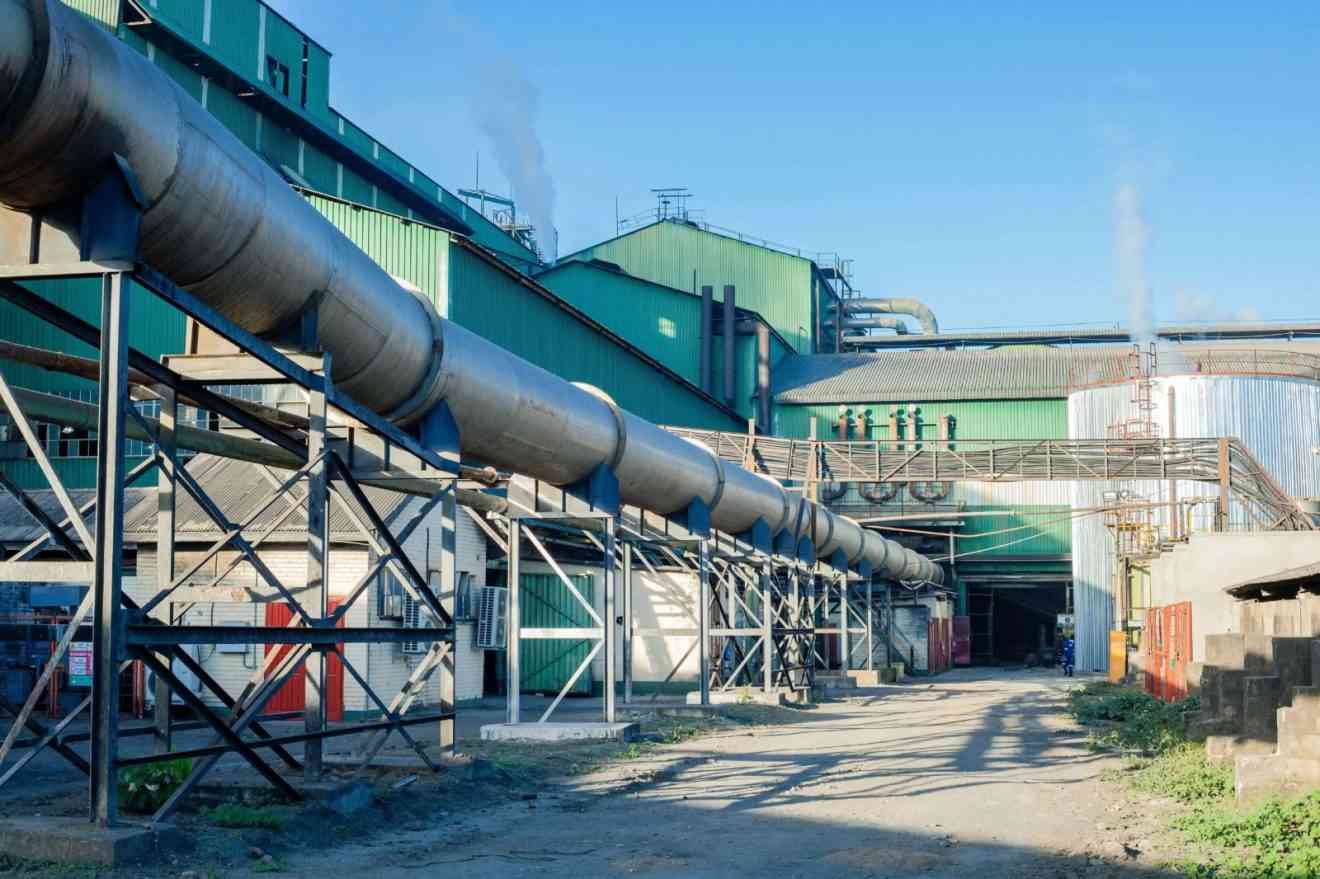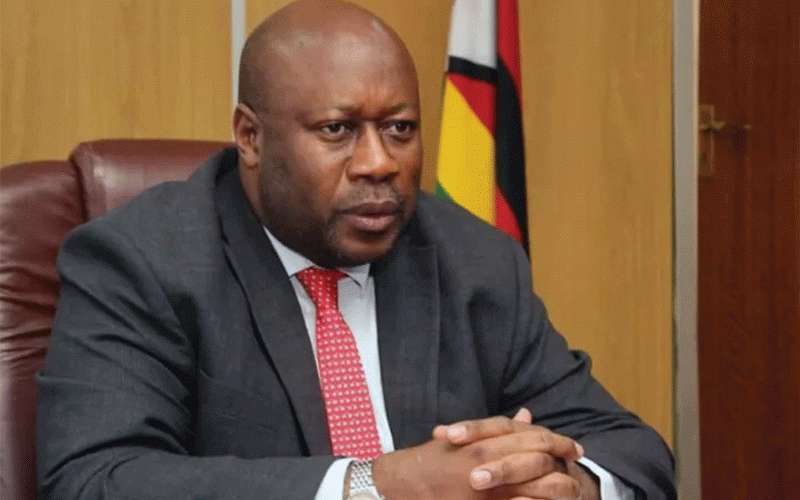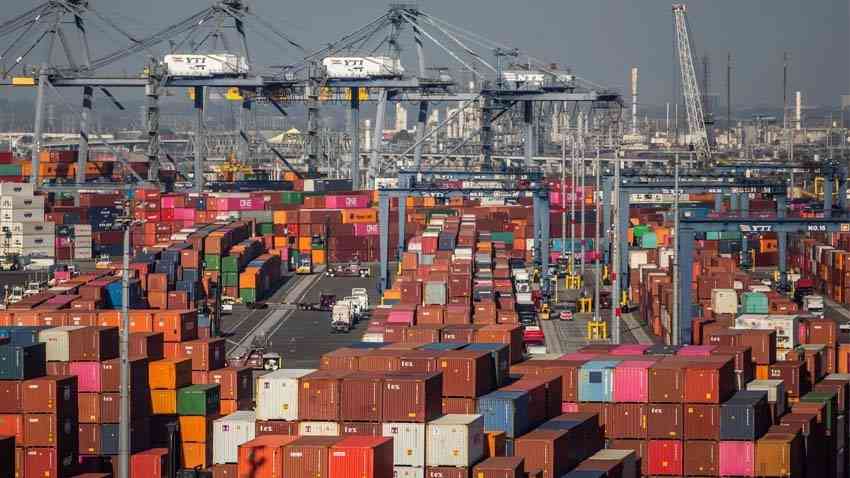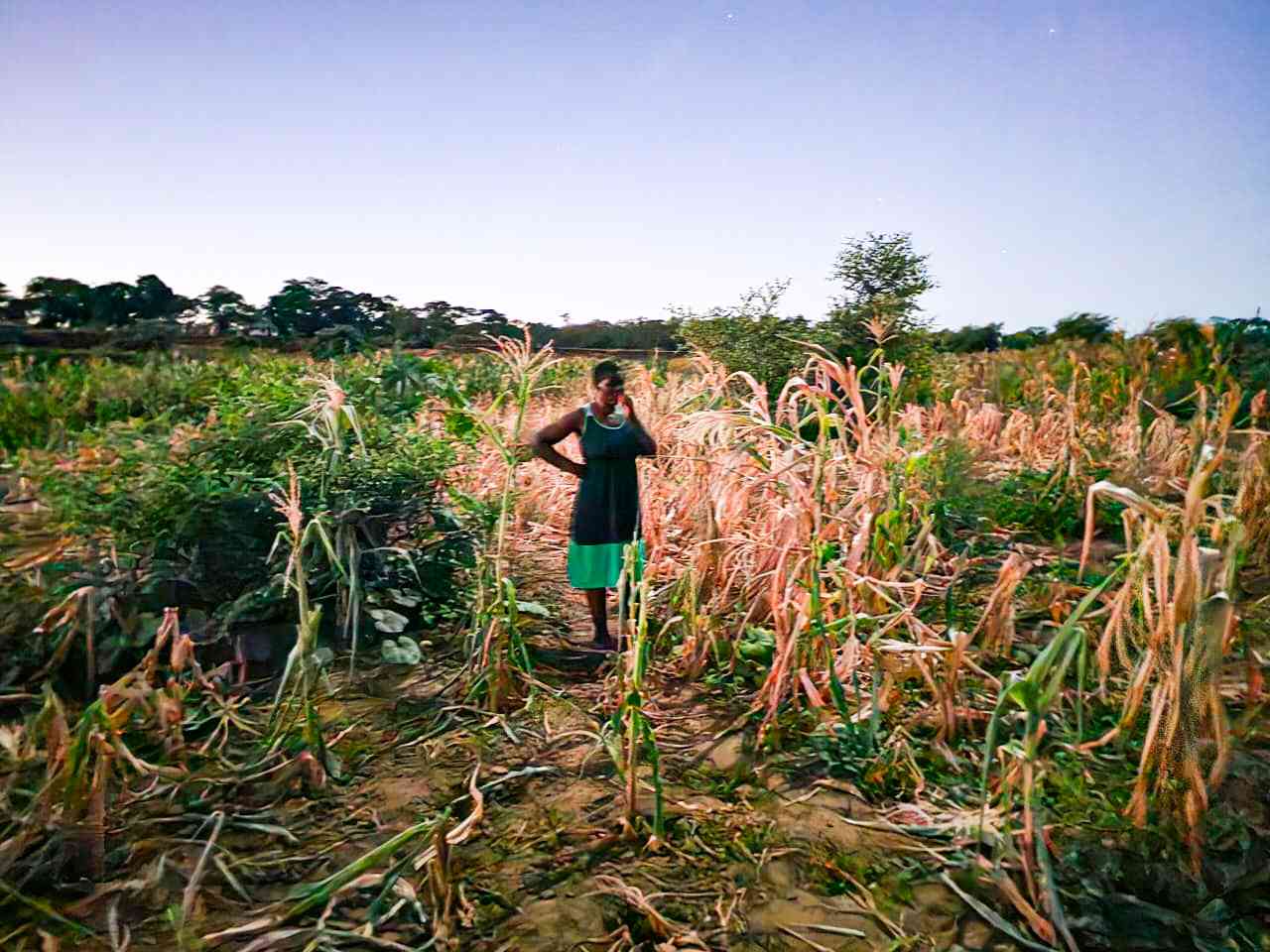
Mbire, Zimbabwe - Emerina Penyani, a 49-year-old farmer gazes upon her once fertile fields, now barren and parched in the arid landscape of Mbire District, located in the Zambezi valley approximately 200 kilometres north of Harare, Zimbabwe's capital.
The relentless heat of the El-Nino induced drought has claimed the life of the crops she once solely relied on for income and sustenance. Penyani’s dark brown, glistening eyes hold a quiet intensity that belies the hardships she faces every day but still reflect her wisdom and determination in giving her family a fighting chance in the crisis they face.
Penyani lives with her husband, two teenage sons and her aging mother.
The community's once fertile fields lie barren, a stark contrast to the hope they once held due to scarcity of water and, the crop failure has pushed the community into a desperate struggle for survival. The effects of the El Nino induced drought have worsened the weather patterns in the area resulting in the failure of drought-resistant crops like millet, sorghum and kanongo maize, which the community have always relied on.
According to the Meteorological Services Department (MSD), El Niño is a natural event that happens in the Pacific Ocean along the equator. It causes the ocean’s surface to become warmer, which affects the weather patterns around the world. This can lead to changes in rainfall and temperature, affecting various regions globally.
During the warming phase of El Nino, it gets hotter and drier. This can cause droughts, a prolonged period of no rains. These dry and hot conditions are harmful to crops.
“I have always known dry seasons, but this… this is different,” Penyani murmurs, her hands sifting through the dry soil.
“Sorghum and kanongo maize have always been our lifeline but, now they have given in,” she laments.
Penyani’s severe situation represents the situation across the district, where the community is grappling with uncertainty
The struggle for survival: barter trade and food scarcity
The scarcity of food has led to a distressing barter system, where even a precious goat is traded for a 10kg bag of mealie meal. The desperation etched onto the faces of the community members speaks volumes about the severity of their circumstances as they continue to lose their livestock in such a trade.
“People are going for a day or two without eating anything, some because they have already traded all their goats for bags of mealie meal, others, because they did not have anything to trade,” said Tafara Kapenda, a villager and small-scale farmer who has witnessed firsthand the dire situation unfolding in his community.
Rain has been an elusive visitor this season, barely enough to quench the parched earth. As a result, more than 2.7 million Zimbabweans are facing the harsh reality of not having enough food to sustain themselves and their families this year, said the Minister of Social Welfare July Moyo while addressing Journalists earlier this year.
The World Food Program (WFP) hunger map for 2023/24 published on 17 January 2024 however shows that 4.1 million people face food insecurity, out of the country’s population of 16.6 million.
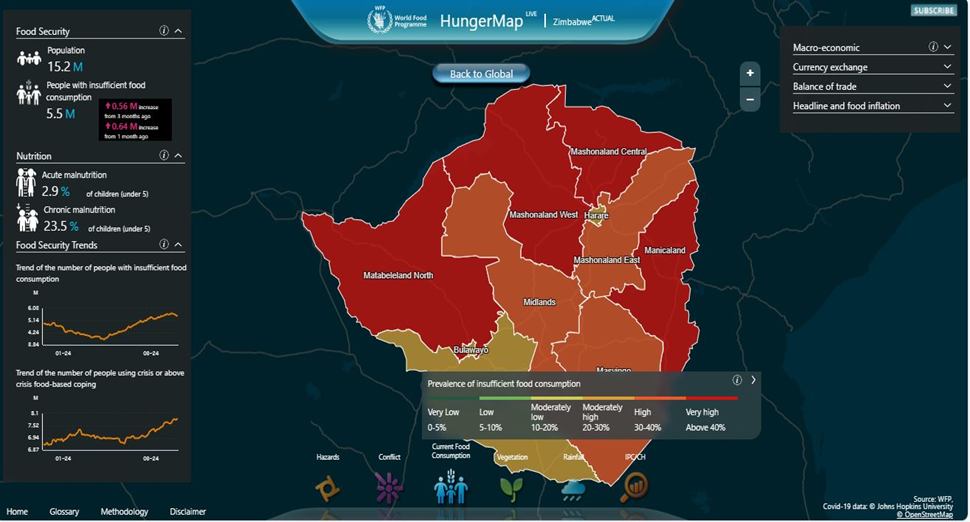
Penyani and other families in her community have to line up for food aid from the government’s Social Services Division.
Some with donkey carts to carry maize but, the distributions are rationed to only 10 kilograms per person.
“If a family has more than five people, they won’t get 50kgs bag of maize but they are given 40kgs.
This can last a month or two depending on the number of people in the family, which explains why some families would now even go for a day without eating anything because they are many and operate on a very tight budget,” Penyani explained
She added that these distributions happen usually once in every three to four months and sometimes longer.
In the previous farming seasons, Penyani would harvest her crops around March and April which would be enough to cater for five family members, but the 2023 to 2024 farming season has not been as she expected.
From her previous harvests, she would sell some of the maize and pay for her children’s education.
Kamusosa’s once-thriving crops now gathered into a pile of dried stalks and leaves for animal feed
However, this season, described as the driest one in Zimbabwe by World Food Program (WFP) 2023 season monitor, put an end to that since she cannot pay the fees anymore when the Basic Education Assistance Module (BEAM) fails to come to her aid.
Royal Netherlands Meteorological Institute said in a report that the Eastern and Southern Africa regions have been experiencing overlapping crises due to the extreme weather. Both regions have alternated between heatwaves and droughts, storms and floods.
Despite that human-caused climate change has led to increasingly unpredictable weather patterns worldwide, El Nino is scorching Southern Africa this season.
Sarah Kew, a Researcher from the Royal Netherlands Meteorological Institute said the ongoing climate change to human activities, such as burning fossil fuels and deforestation, which release greenhouse gases into the atmosphere. These actions are worsening droughts and increasing extreme weather events.
“Ignoring experts’ warnings and failing to reduce carbon footprint will only worsen the impacts of climate change on vulnerable communities already facing water scarcity and food insecurity,” she added
Zimbabwe Government plans
The Zimbabwean Government’s October 2023 – March 2024 Anticipatory Action Plan states that food security is the most affected sectors alongside nutrition, agriculture, water, education, health, and wildlife. The plan targets 180 200 people with budget of $6.9 million United States Dollars in all 10 provinces with the aid of the World Food Program (WFP) and Food and Agriculture Organization (FAO).
The plans include Acaracide distribution, dip tank repair, vaccinations distribution through voucher system, cash with training, cash for Work for water harvesting structures, training through Farmer Field Schools (Pfumvudza and water harvesting), disseminations of simplified weather and climate information to farmers and communities and provision of drought tolerant inputs.
The Permanent Secretary of the Ministry of Lands, Agriculture, Fisheries and Rural Development, Professor Obert Jiri commended on the actions being taken by the government to mitigate the effects of climate change on agriculture.
“Climate change knows no place or boundaries. The adaptation and mitigation measures must be robust. For all communities, climate smart measures are necessary, including non-agricultural interventions,” said Professor Obert Jiri, Permanent Secretary of the Ministry of Lands, Agriculture, Fisheries and Rural Development
Whilst many are in the middle of the despair on how best they can survive, glimmers of hope emerge in the form of sustainable solutions from Latinos Kamusosa, a visionary farmer in the same community.
Kamusosa has embarked on a groundbreaking initiative to establish a vast cassava plantation.
“This project aims to provide more than 20,000 small-scale farmers in the area with a resilient crop that can thrive in the face of drought and uncertainty, Climate change really needs us to explore other crops that can grow in our region rather than depending on the traditional drought-resistant crops, we have to explore other means,” Kamusosa explained.
Kamusosa added that Cassava is a highly adaptable crop that can grow in various weather conditions including those being experienced in Mbire district and in Zimbabwe. The production of cassava is very little and has not received much attention in agricultural policy.
“However, because of economic challenges, declining soil fertility and worsening drought situations, cassava is becoming increasingly important in the food basket and as a buffer against drought shocks.” Kamusosa clarified
According to Agro4Africa, which provides agricultural online resources to Africans and the world at large, the crop is drought-resistant and can thrive in poor soil conditions and types, including loamy, sandy, and well-drained soils. It can tolerate a wide pH range, from acidic to alkaline making it well suited for the arid climate of Mbire. It also grows best in areas with a mean temperature of 25-29°C (77-84°F). It can tolerate temperatures as low as 10°C (50°F) but will stop growing below that.
Additionally, Cassava is a versatile crop that can be used in variety of ways including grinding the roots to make mealie meal, using the leaves as vegetables and even as animal feed.
Call to action
“The climate crisis knows no boundaries, affecting communities across the world. Hence, we need to harness our collective wisdom and resourcefulness to confront this drought head-on, employing sustainable strategies through innovation and international cooperation and aid,” Perm. Sec. Jiri said
He also added that Penyani’s story is a touching reminder of the urgent need for global solidarity through supporting humanitarian organizations working to provide food aid and promoting sustainable solutions like Kamusosa’s cassava plantation.
Young Climate Activist, Natalie Gwatirisa, who is the founder of All for Climate Action (AFCA) NGO, shared on the importance of understanding how climate change is affecting each community separately.
“It is crucial to have an understanding of how climate change is affecting us from the economic, social, environmental and political sectors in Zimbabwe. Also understanding these different dynamics on how climate change exacerbates gender inequality, social inequalities etc. would then mark the beginning of localizing climate action and taking ownership in the process,” she commented
“We are not just victims of this crisis, we are fighters, survivors and we will persevere. But we cannot do it alone, we need help and support to weather this storm and secure a future for our children,” Penyani concluded.



